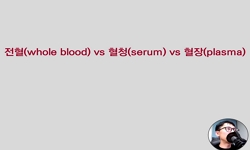본 연구에서는 함철물질이라는 촉매제를 통하여 할로겐화 페놀의 흡착 및 분해가 가능할 것이라는 가정 하에 실험을 진행하였으며, 함철물질만을 이용한 환원반응 실험과 persulfate만을 이용...
http://chineseinput.net/에서 pinyin(병음)방식으로 중국어를 변환할 수 있습니다.
변환된 중국어를 복사하여 사용하시면 됩니다.
- 中文 을 입력하시려면 zhongwen을 입력하시고 space를누르시면됩니다.
- 北京 을 입력하시려면 beijing을 입력하시고 space를 누르시면 됩니다.
함철물질 (Fe-bearing materials)과 persulfate를 이용한 halogenated phenols의 분해 = Degradation of halogenated phenols using Fe-bearing materials and persulfate
한글로보기https://www.riss.kr/link?id=T14580906
- 저자
-
발행사항
울산 : 울산대학교 산업대학원, 2017
-
학위논문사항
학위논문(석사) -- 울산대학교 산업대학원 , 환경공학전공 , 2017. 8
-
발행연도
2017
-
작성언어
한국어
- 주제어
-
발행국(도시)
울산
-
형태사항
41 ; 26 cm
-
일반주기명
지도교수: 오석영
- 소장기관
-
0
상세조회 -
0
다운로드
부가정보
국문 초록 (Abstract)
본 연구에서는 함철물질이라는 촉매제를 통하여 할로겐화 페놀의 흡착 및 분해가 가능할 것이라는 가정 하에 실험을 진행하였으며, 함철물질만을 이용한 환원반응 실험과 persulfate만을 이용한 산화 반응 그리고 함철물질과 persulfate를 함께 사용하여 할로겐화 페놀의 산화/환원 반응의 효율과 그 가능성을 알아보았다. persulfate 만을 이용한 산화에서는 2,4-dibromophenol (DBP), 2,4-dichlorophenol (DCP), 2,4-difluorophenol (DFP), 2,4,6-trichlorophenol (TCP), 4-chlorophenol (4CP), 2-chlorophenol (2CP), 및 phenol은 변화가 없었다. Fe(0) 만을 이용한 환원에서는 halogenated phenol은 11-44% 감소하였으며, phenol은 약 4% 미만 감소하였다. Fe(0)와 250 mg/L persulfate를 이용하여 분해하였을 때 DCP와 DBP는 완전히 제거되었으며, DFP는 약 80% 제거되었다. TCP, 4CP, 2CP 및 phenol의 제거효율은 각각 88, 20, 24, 6%이었다. Persulfate 농도를 500 mg/L로 증가시켰을 때 약 41% 제거되었으며, 2000 mg/L로 증가시켰을 때 95% 제거되었다. FeS 만을 이용한 환원에서는 halogenated phenol은 17-45% 감소하였으며, phenol의 경우 약 6% 정도 감소하였다. FeS 와 250 mg/L persulfate를 이용하여 분해 실험을 하였을 때 27-82% 의 halogenated phenol이 감소하였다. Phenol의 경우 약 32% 제거 되었는데, persulfate 농도를 500 및 2000 mg/L로 증가시켰을 때 각각 50%, 97% 제거 되었다. Fe(0)와 FeS는 할로겐화 페놀의 종류에 따라 분해 효율은 각각 다르지만 persulfate와 동시에 존재할 때 촉매 역할을 함으로써 분해효율을 급격히 증가시켰다. 따라서 비용이 저렴한 Fe(0)와 FeS를 이용하여 할로겐화 페놀을 persulfate를 이용한 산화처리 공정은 효과적이며 충분한 경쟁력이 있다고 판단된다.
다국어 초록 (Multilingual Abstract)
Jae-Ik Kim
Environmental Engineering
Graduate school of industry University of Ulsan
Laboratory experiments were conducted under the assumption that decomposition of halogenated phenol by persulfate would be enhanced by Fe-bearing materials which act as catalysts. Via direct oxidation by persulfate alone, 2,4-dibromophenol (DBP), 2,4-dichlorophenol (DCP), 2,4-difluorophenol (DFP), 2,4,6-trichlorophenol (TCP), 4-chlorophenol (4CP), 2-chlorophenol (2CP), and phenol were not significantly removed. Direct reduction with only Fe (0) decreased the concentrations of halogenated phenols by 11-44%. In contrast, phenol was decreased by less than 4%. In the co-presence of Fe (0) and persulfate (250 mg/L), DCP and DBP were completely removed and DFP was removed by about 80%. Removal efficiencies of TCP, 4CP, 2CP, and phenol were 88, 20, 24, and 6%, respectively. By increasing persulfate concentration to 500 and 2000 mg/L, phenol was removed by 41 and 95%, respectively. Similarly, direct reduction by FeS showed 6-45% removal and FeS-activated persulfate removed the halogenated phenols by 27-82%. Removal efficiency was further enhanced to 80 and 97% with 500 and 2000 mg/L of persulfate, respectively. Our results indicated that the degradation of halogenated phenols were significantly enhanced in the presence of Fe-bearing materials and persulfate, suggesting that the Fe-bearing materials act as catalysts. Degradation of halogenated phenols by Fe(0)/FeS-activated persulfate was affected by the type and number of halogenated functional groups. Our results suggest that oxidation by Fe(0)/FeS-activated persulfate may be an effective and competitive process to remediate halogenated phenols in natural and engineered systems.
Degradation of halogenated phenols using Fe-bearing materials and persulfate Jae-Ik Kim Environmental Engineering Graduate school of industry University of Ulsan Laboratory experiments were conducted under the assumption that decomposition of haloge...
Degradation of halogenated phenols using Fe-bearing materials and persulfate
Jae-Ik Kim
Environmental Engineering
Graduate school of industry University of Ulsan
Laboratory experiments were conducted under the assumption that decomposition of halogenated phenol by persulfate would be enhanced by Fe-bearing materials which act as catalysts. Via direct oxidation by persulfate alone, 2,4-dibromophenol (DBP), 2,4-dichlorophenol (DCP), 2,4-difluorophenol (DFP), 2,4,6-trichlorophenol (TCP), 4-chlorophenol (4CP), 2-chlorophenol (2CP), and phenol were not significantly removed. Direct reduction with only Fe (0) decreased the concentrations of halogenated phenols by 11-44%. In contrast, phenol was decreased by less than 4%. In the co-presence of Fe (0) and persulfate (250 mg/L), DCP and DBP were completely removed and DFP was removed by about 80%. Removal efficiencies of TCP, 4CP, 2CP, and phenol were 88, 20, 24, and 6%, respectively. By increasing persulfate concentration to 500 and 2000 mg/L, phenol was removed by 41 and 95%, respectively. Similarly, direct reduction by FeS showed 6-45% removal and FeS-activated persulfate removed the halogenated phenols by 27-82%. Removal efficiency was further enhanced to 80 and 97% with 500 and 2000 mg/L of persulfate, respectively. Our results indicated that the degradation of halogenated phenols were significantly enhanced in the presence of Fe-bearing materials and persulfate, suggesting that the Fe-bearing materials act as catalysts. Degradation of halogenated phenols by Fe(0)/FeS-activated persulfate was affected by the type and number of halogenated functional groups. Our results suggest that oxidation by Fe(0)/FeS-activated persulfate may be an effective and competitive process to remediate halogenated phenols in natural and engineered systems.
목차 (Table of Contents)
- <목 차>
- 1. 서론.........................................................................................................................................................1
- 1.1 연구배경 및 목적.............................................................................................................................1
- <목 차>
- 1. 서론.........................................................................................................................................................1
- 1.1 연구배경 및 목적.............................................................................................................................1
- 2. 이론적 배경...........................................................................................................................................3
- 2.1 페놀.......................................................................................................................................3
- 2.2 In-Situ Chemical Oxidation (ISCO)...................................................................................6
- 2.3 Persulfate...............................................................................................................................8
- 2.3.1 Persulfate의 성질..............................................................................................................8
- 2.3.2 Persulfate의 물리화학적 성질.........................................................................................8
- 2.3.3 Persulfate 산화..................................................................................................................8
- 2.4 영가철 (zero-valent iron : ZVI)........................................................................................9
- 2.5 Iron sulfide (FeS)..............................................................................................................10
- 3. 실험재료 및 방법.................................................................................................................11
- 3.1 실험재료.............................................................................................................................11
- 3.2 실험방법.............................................................................................................................12
- 3.2.1 Halogenated phenols의 persulfate/oxidation의 분해 실험..........................................12
- 3.2.2 Fe양 변화실험................................................................................................................12
- 3.2.3 Persulfate 농도변화 실험..............................................................................................13
- 3.2.4 Control실험......................................................................................................................13
- 4. 결과 및 고찰.........................................................................................................................14
- 4.1 DBP persulfate/oxidation의 Fe(0) 분해 실험.................................................................14
- 4.2 DFP persulfate/oxidation의 Fe(0) 분해 실험.................................................................15
- 4.3 TCP persulfate/oxidation의 Fe(0) 분해 실험.................................................................16
- 4.4 DCP persulfate/oxidation의 Fe(0) 분해 실험.................................................................17
- 4.5 4CP persulfate/oxidation의 Fe(0) 분해 실험..................................................................18
- 4.6 2CP persulfate/oxidation의 Fe(0) 분해 실험..................................................................19
- 4.7 Phenol persulfate/oxidation의 Fe(0) 분해 실험..............................................................20
- 4.8 DBP persulfate/oxidation의 FeS 분해 실험...................................................................21
- 4.9 DFP persulfate/oxidation의 FeS 분해 실험....................................................................22
- 4.10 TCP persulfate/oxidation의 FeS 분해 실험..................................................................23
- 4.11 DCP persulfate/oxidation의 FeS 분해 실험.................................................................24
- 4.12 4CP persulfate/oxidation의 FeS 분해 실험..................................................................25
- 4.13 2CP persulfate/oxidation의 FeS 분해 실험..................................................................26
- 4.14 Phenol persulfate/oxidation의 FeS 분해 실험..............................................................27
- 5. 결론.........................................................................................................................................28
- 6. 참고문헌.................................................................................................................................30











